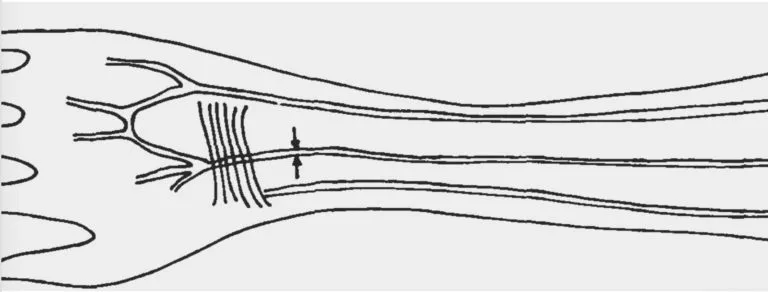It seems that more and more adults have an extra artery in their arms as humans continue to evolve at a rapid rate, a study has found.
Scientists in Australia believe that humans are undergoing a micro-evolution in which evolutionary changes can be observed over a short period of time.
The artery forms while a baby is in the womb and is the main vessel that supplies blood to the forearm and hand, but it usually disappears during gestation and is replaced by the radial and ulnar arteries. However, some people retain all three.
Read more about human evolution:
- Meet the real-life superhumans pushing the limits of human ability
- Neanderthals lost their Y chromosome to modern humans
The investigation by Dr Teghan Lucas of Flinders University in Adelaide, along with Professor Maciej Henneberg and Dr Jaliya Kumaratilake of the University of Adelaide, showed a “significant increase” in the prevalence of the median artery since the late 19th Century. The team analysed published records in anatomical literature and dissected cadavers from individuals born in 20th Century.
"Since the 18th Century, anatomists have been studying the prevalence of this artery in adults and our study shows it’s clearly increasing," said Dr Lucas.
"The prevalence was around 10 per cent in people born in the mid-1880s compared to 30 per cent in those born in the late 20th Century, so that’s a significant increase in a fairly short period of time, when it comes to evolution,” she said.

“But increasing numbers of cases retain it, so a person can have all three arteries,” the authors wrote. "People born 80 years from now will all carry a median artery if the trend continues."
Dr Lucas said the study demonstrates that humans are evolving at a faster rate than at any point in the past 250 years.
The median artery is not the only example of ongoing human evolution. Many babies are being born without wisdom teeth.Dr Lucas said faces are becoming a lot shorter, with smaller jaws meaning there is less room for teeth.
“This is happening in time as we have learnt to use fire and process foods more. A lot of people are just being born without wisdom teeth,” she said.
The research also found that some people are being born with additional bones in their arms and legs as well as shorter faces, or with abnormal connections of two or more bones in their feet.
The investigation’s authors suggested changes in natural selection could be the major reason for micro-evolution.
Reader Q&A: Which part of the human body evolved most recently?
Asked by: Luca Blackwell
Evolution doesn’t just hand out useful traits such as opposable thumbs or colour vision like lottery prizes. Natural selection is constantly tinkering, and no part of our body is more ‘recent’ than another. But some are changing faster.
One of the fastest movers is the human jaw, which has been steadily shrinking over the last 10,000 years, as the invention of agriculture and cooking gave us softer foods that need less chewing.
Read more: